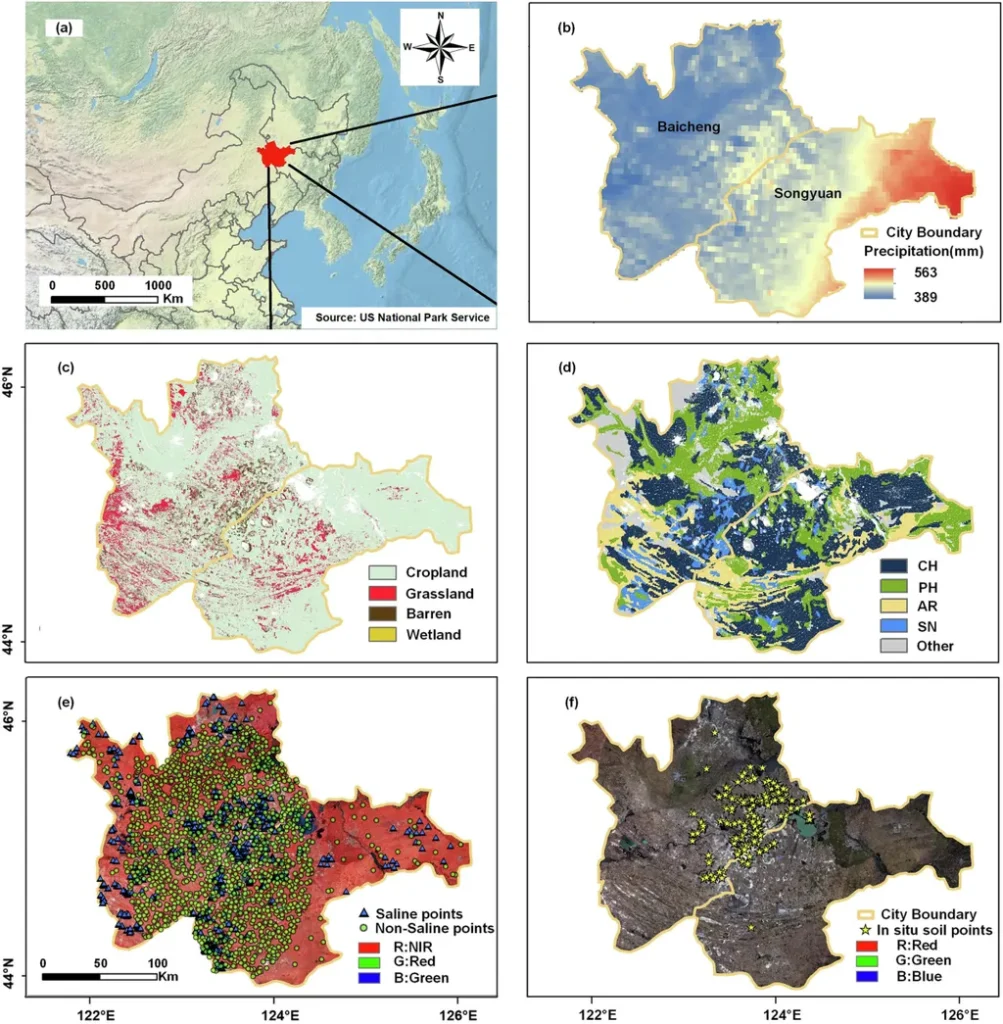In the heart of China’s Western Songnen Plain, a region known for its fertile black soils, a silent threat has been creeping across the landscape: soil salinization. This process, driven by a complex interplay of natural and human-induced factors, poses a significant risk to agricultural productivity and food security. A groundbreaking study, published in *Scientific Data*, has shed new light on this issue, offering a high-resolution, 40-year dataset that could revolutionize how we monitor and manage saline soils.
The research, led by Bin Wang from the State Key Laboratory of Black Soils Conservation and Utilization at the Northeast Institute of Geography and Agroecology, Chinese Academy of Sciences, presents a detailed map of soil salinity dynamics from 1985 to 2024. The team achieved an impressive overall accuracy of 89.3% and a Kappa coefficient of 0.782, using a combination of field surveys, remote sensing imagery, and machine learning algorithms.
The study addresses a critical gap in our understanding of soil salinization. “Existing datasets in China show large discrepancies in salinized area estimates due to coarse spatial and temporal resolution,” Wang explains. By developing a regional soil electrical conductivity (EC) prediction model with an R-squared value of 0.467, the team was able to produce annual maps at a 100-meter resolution. This level of detail is a significant improvement over previous efforts, with only a 2.78% deviation from the second National Land Survey.
The implications for the agriculture sector are substantial. Soil salinization leads to land degradation and reduced crop yields, directly impacting farmers’ livelihoods and food security. With this new dataset, stakeholders can better assess the extent and severity of soil salinization, enabling more targeted and effective management strategies.
The high-resolution dataset reveals the spatiotemporal dynamics of soil salinity, providing a comprehensive view of how the problem has evolved over time. This information is invaluable for policymakers, farmers, and researchers alike. “Our results support improved monitoring and management to address environmental sustainability and food security,” Wang notes.
The study also highlights the potential of machine learning and remote sensing technologies in agricultural research. As these tools continue to advance, we can expect even more sophisticated models and higher-resolution datasets in the future. This could pave the way for precision agriculture, where farming practices are tailored to the specific needs of each plot of land, optimizing resource use and minimizing environmental impact.
In the broader context, this research underscores the importance of investing in soil health. As the global population grows and climate change intensifies, the pressure on our agricultural systems will only increase. By understanding and mitigating soil salinization, we can help ensure that our soils remain productive and resilient for generations to come.
The study, led by Bin Wang from the State Key Laboratory of Black Soils Conservation and Utilization at the Northeast Institute of Geography and Agroecology, Chinese Academy of Sciences, was published in *Scientific Data*, offering a crucial tool for addressing one of agriculture’s most pressing challenges.

